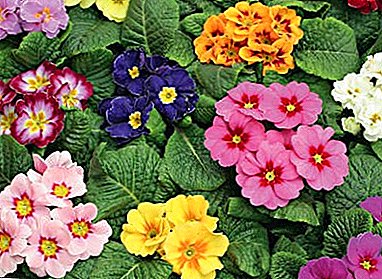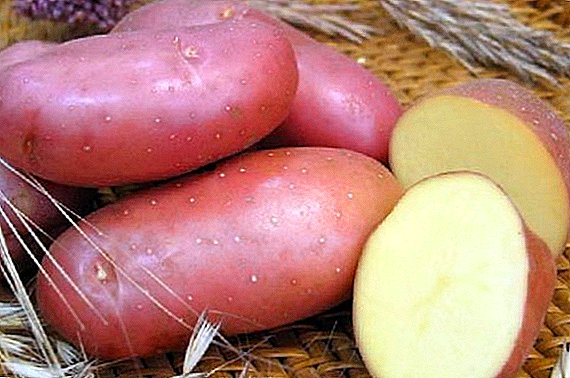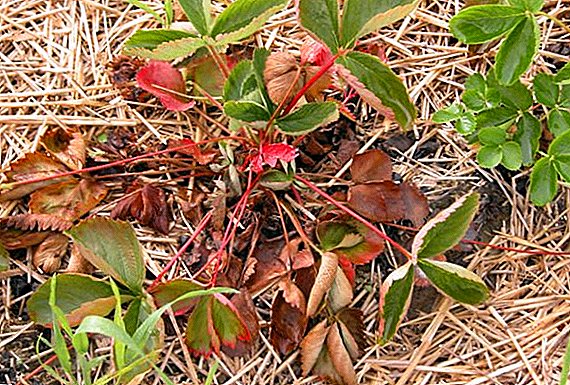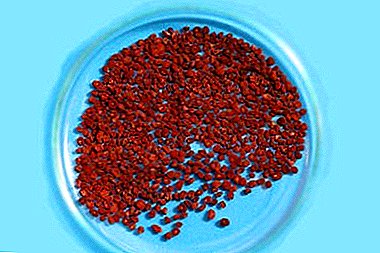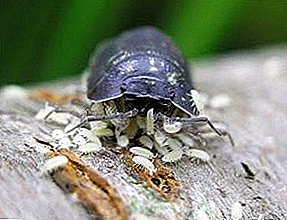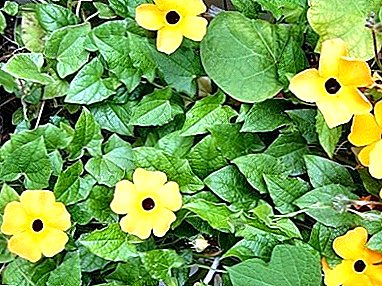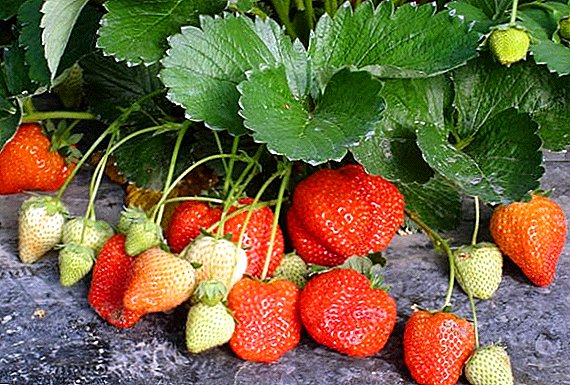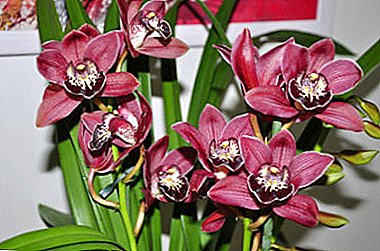
The orchid is famous for its capriciousness and complexity in cultivation. However, not all orchids are so capricious.
There are varieties that do not impose a lot of requirements on their care. One of such species is Cymbidium Orchid.
This article will cover everything about growing, breeding and possible pests that can attack the beautiful Cymbidium, in the photo we can show this flower.
A brief definition of what kind of plant
The described species refers to evergreens, which belong to the genus epiphytic. Their homeland are Asian subtropics, Australia, as well as some parts of the Himalayas.
Detailed botanical description
 The leaves are medium in size, can reach 25-28 centimeters in length. Sometimes take the form of an oval with a sharp end, and there are species with blunt ends. The color of the sheet plates is saturated, green. To the touch they are not very firm, fleshy.
The leaves are medium in size, can reach 25-28 centimeters in length. Sometimes take the form of an oval with a sharp end, and there are species with blunt ends. The color of the sheet plates is saturated, green. To the touch they are not very firm, fleshy.
Peduncle compared with other types of long. Sometimes it grows up to 150 centimeters in length. Inflorescences form on this floral arrow that can hang down under the weight of the petals, thus creating whole brushes.
The size of the opened buds depends entirely on the growing conditions. Maximum reach and 11 centimeters in diameter. The color of the petals can be very diverse, able to please even the most demanding and spoiled florist. The colors are found and just cream, and even light green.
History of
The first recordings of Cymbidium appeared 20 centuries ago in China. And so far this culture is widespread in Asian countries. However, surprisingly, species with small flowers are of higher value. They are even specially bred by breeders.
Buy this type is quite problematic. At the beginning of the 14th century in Japan they gave a classification of this orchid, while dividing it into types and forms. In the 17th century, Cymbidium became very popular among the rich strata of the population. And at the moment this flower has become available to everyone.
What is the difference from other species?
The peculiarity of growing this variety in its requirements for care. Air temperatures should not be high, watering - frequent and plentiful, and the soil weighted, one that will hold moisture in the pot.
Sorts with names and photos
We name only the most famous ones, since it is impossible to describe all the subspecies because of the innumerable numbers.
Aloellitic

One of the smallest varieties. Only about 30 centimeters grow to a height, and flowers can reach 4-5 centimeters in diameter. They have a bardic tint mixed with pale cream.
Abourneum

The second name of the orchid - ivory - is given due to the color of the petals. They are white with a slight overflow of yellowing. The fragrance that these flowers emit is somewhat similar to the smell of lilac.
Tracey

Plant with flowers of lemon color with reddish edges. Buds grow up to 12 cm in diameter, and the peduncle itself can reach meter dimensions, and sometimes even more. On one floral arrow easily accommodates up to 20 buds simultaneously. The lip is velvet, has strips and spots of bright shade.
Bloom
When and how?
At home, buds begin to form in the last months of summer. (By the way, the whole summer period you can keep an orchid outside). As soon as the first flowers begin to appear, Cymbidium is better placed in the room.
Some flower growers cut the flowered flower stalks and make them bouquets. Such flower arrangements are in the vase for a long time.
We offer to watch a video about the features of flowering cymbidium:
Before and after flowering
Before flowering, the main thing is to provide the plant with as much light as possible.. This factor is the key to abundant flowering. But after flowering, it is necessary to give Cymbidium a rest. To do this, it is necessary to reduce soil moisture to once every two weeks, and stop feeding in general. In this mode, the orchid should live for a month.
What if the buds do not appear?
 How to care for a flower to appear from the arrow?
How to care for a flower to appear from the arrow?
The grower should provide the plant with the following conditions:
- a lot of ambient light;
- difference of daily temperatures (about 5-6 degrees);
- humidified air;
- regular spraying of the Cymbidium surface.
Detailed care instructions at home
Choosing a place
Since this orchid, like all others, needs a lot of light, the “place of residence” must be chosen to be as light as possible. However, it is necessary to ensure that burning sun rays do not fall on the surface of the flower, especially during the hot period. In the summer, you can make a pot with a plant on the street. This can be done as long as the temperature of the night air stays above 10 degrees Celsius. If the temperature falls below this, it may become dangerous for the health of Cymbidum.
What soil and pot to plant?
For the first planting, the pot should be about 12-15 centimeters in diameter. No more, otherwise the entire growth will go only to the root system. To ensure that the roots participate in the process of photosynthesis, it is necessary to use only transparent pots.
As for the soil, it is better not to buy it ready. The reason is that all substrates for orchids are very light and are prepared in such a way as to prevent stagnant water.
But the Cymbidium requires opposite conditions - the moisture should be in the pot. Therefore, a mixture of soil will need to prepare their own.
 For the preparation of soil flower grower will need:
For the preparation of soil flower grower will need:
- pine bark;
- sphagnum moss;
- leaf humus;
- river sand;
- charcoal;
- perlite, whose task is to retain moisture.
These components are taken in proportions of 3: 2: 1: 1: 1: 1 and mix well.
Temperature
Cymbidium prefers cool rooms. Therefore, during the formation of buds and flowering it is necessary to maintain the temperature at the level of 13-19 degrees of heat. But during the rest period of the orchid the air should be cooler - about 10-15 degrees. Do not forget about the difference between day and night temperatures, which is usually five degrees.
Under any circumstances, the air in the room should not be cooled below 8 degrees above zero.
Humidity
This indicator should not fall below 50%. Ideally, humidity should be kept at 80-90%.
Lighting
Cymbidium needs a lot of light.. In summer, this condition is easy to provide, as the sun is usually abundant, and the light day is rather long. But in the winter season with the light becomes more difficult. Therefore it is necessary to resort to the help of fitolamps. It is good to place the plant on the south side of the room. In winter, the sun's rays are not so hot, they just provide light.
Watering
 In winter, at a temperature of about 15-17 degrees, the soil is moistened no more than once every two weeks. If the heat increases, and the humidity decreases, then the frequency of watering increase. There are already looking at the state of the root system. In summer, the soil is moistened every seven days.
In winter, at a temperature of about 15-17 degrees, the soil is moistened no more than once every two weeks. If the heat increases, and the humidity decreases, then the frequency of watering increase. There are already looking at the state of the root system. In summer, the soil is moistened every seven days.
If the Cymbidium is in the open air, then when drawing up the irrigation schedule, it is necessary to take into account the rainfall, if there are a lot of them, then there is no need for artificial irrigation.
Top dressing
Fertilize the plant better immediately with watering. Since it is in this way fertilizing gets into the soil evenly. During the growth and development of the plant it is fed with every 2-3 irrigation. But during flowering and within a month after it the feeding is completely stopped.
Transfer
This manipulation is carried out once every three years. Usually, the transplant is combined with the reproduction process. Here the main thing is to do everything carefully and carefully so as not to harm the root system.
We offer to watch the video about cymbidium transplantation:
How to multiply?
This type of orchid is propagated by division of rhizomes. This can be done only if the root system is sufficiently thick and developed.
 The process of dividing orchids:
The process of dividing orchids:
- The whole flower is removed from the pot.
- Divide the plant into two parts so that on each of the parts there are two young bulba and one old, brown one. It is in the last bulba that all the nutrients needed by the Cymbidium during the first time after transplantation are stored.
- After separation, remove the diseased roots. and the healthy ones are cut off in such a way that only 0.1 meters of roots remain. We cut the cut sites with crushed coal and let the rhizome dry.
- We plant a divided plant in a moist and compacted soil.
Pests and diseases
In open spaces, it is better to plant a pot with a plant on a hill in order to avoid small pests in the soil.
More than 30 types of parasites can attack an orchid.. Among the most common are spider mites, aphids, scale insects and worms. as well as bulb mites. The way to deal with them is the same: three times treatment with insecticides with an interval of 5-7 days. Remember to remove damaged areas before spraying.
It is necessary to strictly follow the instructions to the drug, so as not to harm the Cymbidium.
Prevention of various problems
There are several tricks to avoid difficulties while growing Cymbidium.:
- it is better to place the flowerpots on the grates (this will help prevent infection of the root system);
- inspect the plant regularly and remove damaged areas;
- carry out hygiene procedures using tincture needles;
- disinfect the pots before planting.
We offer to watch a video about possible problems and errors in growing cymbidium:
In ancient times, such an orchid was available only to the rich, and now we are fortunate enough to have Cymbidium commercially available. Therefore, you need to appreciate this opportunity and properly care for the plant.


